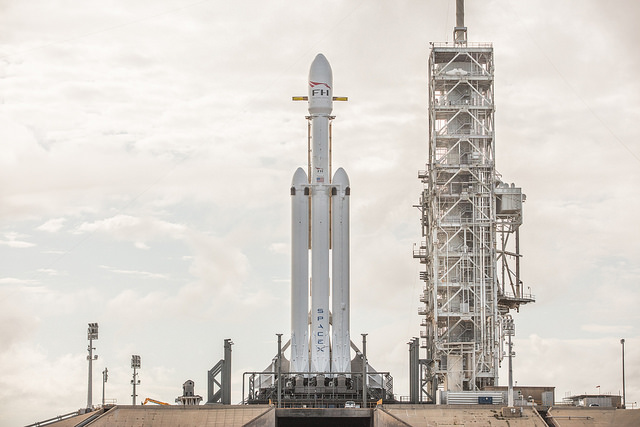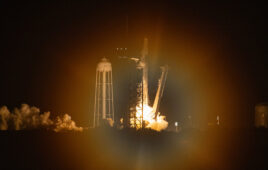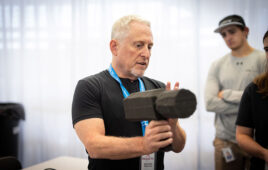
SpaceX successfully launched a Tesla Roadster onboard the Falcon Heavy rocket. Credit: SpaceX
Updated 2/15
A pair of Elon Musk run companies came together, as a Tesla Roadster has been launched on a SpaceX rocket.
On Feb. 6, SpaceX launched the Falcon Heavy demonstration mission from Launch Complex 39A at NASA’s Kennedy Space Center in Florida, equipped with a midnight-cherry Tesla Roadster. Falcon Heavy represents the most powerful operational rocket in the world by a factor of two and has the ability to lift more than twice the payload of the next vehicle at one-third of the cost. Only the Saturn V moon rocket, which has not flown since 1973, delivered more payload to orbit.
Following the launch, Falcon Heavy’s second stage will attempt to place the Tesla Roadster into a precessing Earth-Mars elliptical orbit around the sun. Demonstration missions often carry steel or concrete blocks as mass simulators, but Musk stated that a red Roadster was “more fun and without irreplaceable sentimental value.”
The first stage of Falcon Heavy is comprised of side cores or boosters that are connected to the center core at its base and at the vehicle’s interstage. The two side cores are both flight-proven, with one launching the Thaicom 8 satellite in May 2016 and the other supporting the CRS-9 mission in July 2016.
The vehicle has 27 Merlin engines with three cores capable of generating more than five million pounds of thrust.
The launch occurred shortly after 3:45 p.m. EST, after a delay that lasted more than three hours due to upper level wind shears.
During the test launch, SpaceX is attempting to land all three first stage cores. Following booster separation, Falcon Heavy’s two side cores successfully landed at SpaceX’s Landing Zones 1 and 2 at Cape Canaveral Air Force Station. The center core was supposed to land on the “Of Course I Still Love You” droneship, which was stationed in the Atlantic Ocean.
However, Musk confirmed that the center core did not actually land on the droneship. Recently, Musk explained the reasoning behind the core falling short of its destination, Tweeting Feb. 12 that it was caused by “Not enough ignition fluid to light the outer two engines after several three engine relights. Fix is pretty obvious.”
Musk said that the company did not have future plans for the center core.
The space exploration company is hoping to gather critical data throughout the mission. According to the company, a successful demonstration mission will be measured by the quality of information gathered to improve the launch vehicle for existing and future customers.




